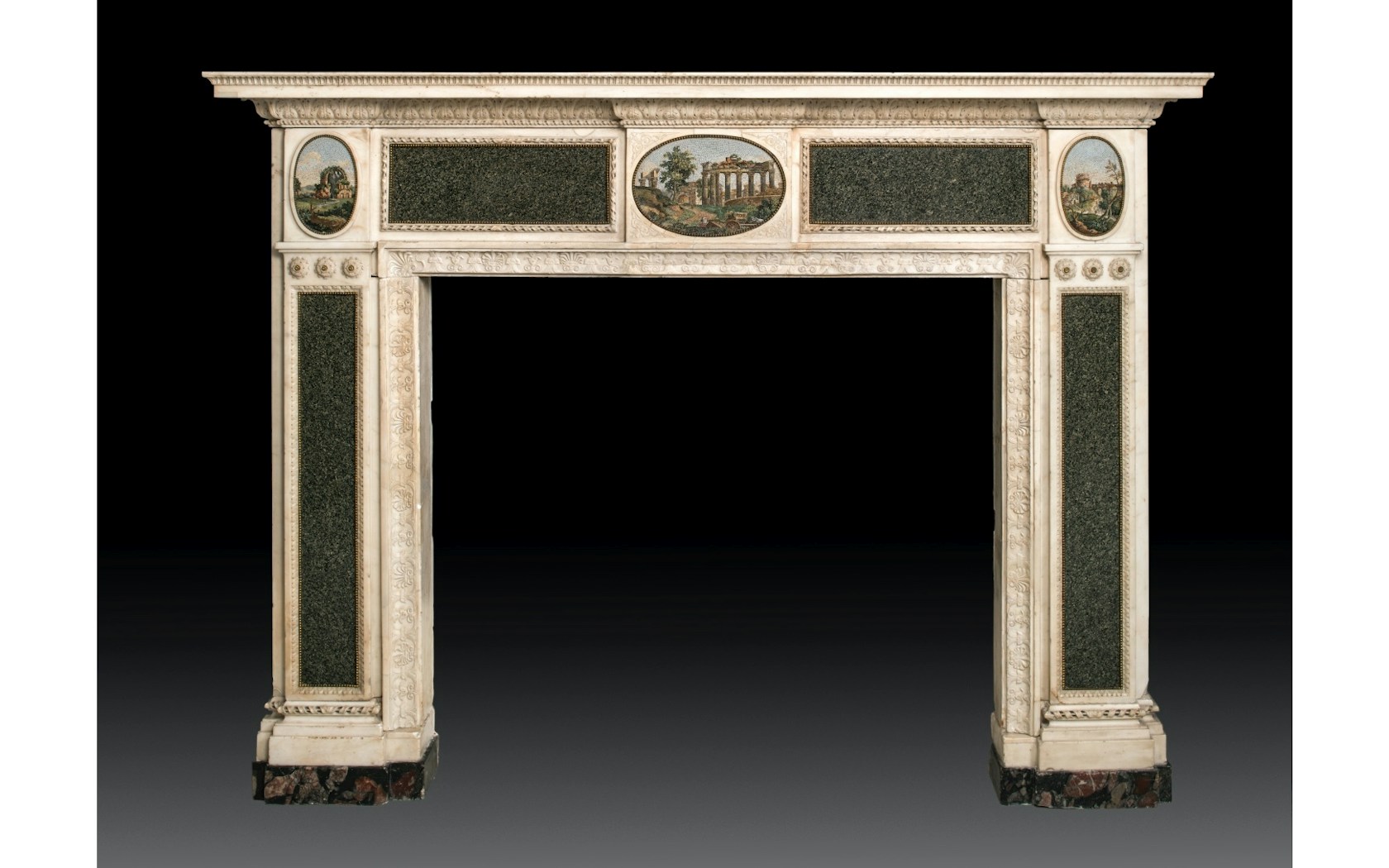
The Art De Vivre of Renzo Mongiardino and Federico Forquet
Alessandra Di Castro and Martina Mondadori on two Italian grand decorators
- By TEFAF Editors
- Meet the Experts
During a recent Instagram Live discussion, art dealer and TEFAF exhibitor Alessandra Di Castro and Cabana Magazine Editor in Chief Martina Mondadori spoke about antiques jewelry, micro-mosaics, but also shared their thoughts about two Italian grand decorators who transformed their homes into livable artworks.
It is a great and intimate art to design someone’s interior, the rooms and spaces that eventually constitute a home. When this someone grew up surrounded by art, one can only imagine the great challenge of translating the client’s taste and connoisseurship into a three-dimensional, livable home. For Alessandra Di Castro and Martina Mondadori, art has always been an integral part of their daily lives. Having grown up in Italy where one encounters art not just in museums, but by simply wandering through the historic streets and old towns filled with churches and palaces, Di Castro’s and Mondadori’s aesthetic visions not only translate into their professional practice but also in their private homes, decorated by two of Italy’s most famously known interior decorators of the twentieth century: Renzo Mongiardino and Federico Forquet.


The walls of Mondadori’s dining room in her family home in Milan are covered with antique plates of different sizes, colors, and patterns. The idea for the eclectic collection came from the grand Italian decorator Renzo Mongiardino (1916–1998), to whom the apartment owes its beauty. With a degree in architecture—being a pupil of Italian architect and designer Gio Ponti (1891–1979)—and a background as set designer for stage and film, the Genua-born decorator’s artistic comprehension of architecture and decoration is what makes his work so impactful. He is known for lush interiors with trompe l’oeil finishes, lending his interiors a theatrical and dramatic quality. Rooms that worked for him, he would call ‘felice’, happy.
Mongiardino’s artistic vision was informed by his deep historical understanding and his ability to seemingly effortlessly layer different epochs, styles, and registers, always using symmetry as a starting point. “For Mongiardino, it were the proportions of the room that dictated the decoration,” says Mondadori. He would impose symmetry on the spaces he decorated, and then he would start with one very important object—one of Mongiardino’s skills being his understanding of the quality of a beautiful object. From this central piece, the rest of the room would be decorated around that antique object.

No less expressive of the Italian ‘art de vivre’ are the interiors of the now 90-year-old Federico Forquet. Forquet’s vision is influenced by Neoclassicism and the ‘Dolce Vita’ era of Rome and his hometown of Naples. With a background in the fashion industry, having worked by the side of Balenciaga for several years, he translates his understanding of fabrics and patterns to his interior designs. His consistent vision as a decorator is to merge fine Italian craftsmanship with an intrinsic sense of comfort and practicality, never losing out of sight the finishing touch of the creator’s joyfulness.
Who could have better designed the interiors of Alessandra Di Castro, who herself is a lover of objects, than someone who understands the beauty of small, rare and precious pieces such as Forquet? “His passion for objects is outstanding,” says Di Castro. Forquet is a collector himself—he bought his first sculpture, a small Egyptian figure, at the age of 14–and has brought together his own collection, including the most beautiful micro-mosaics, throughout the years. “I have always admired his generosity in lending his artworks for instance to public exhibitions or giving his collection to the FAI [Fondo Ambiente Italiano]. He has always been passionate not only for himself, but also loves to share his passion,” Di Castro continues. “Working with him on the decoration of my house was an experience. He is very knowledgeable, and when he decides that an object fits, there is nothing you can do to convince him otherwise.”

The interiors of both Mongiardino and Forquet reflect the best of Italian aesthetics, leaving an enduring legacy and an homage to their country of birth, translating the warm colors of Italy’s cities and its rich artistic history into patterns, fabrics, and ultimately rooms to be lived in. They decorated a number of the most tasteful interiors for art-enthusiasts such as Alessandra Di Castro and Martina Mondadori, who eagerly share the joy they experience from living in their masterfully designed homes.







